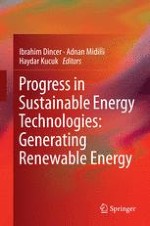2014 | OriginalPaper | Buchkapitel
15. Combined Effect of Global Warming and Buildings Envelope on the Performance of Ground Source Heat Pump Systems
verfasst von : Mohamad Kharseh, Lobna Altorkmany, Mohammed Al-Khawaja, Ferri Hassani
Erschienen in: Progress in Sustainable Energy Technologies: Generating Renewable Energy
Aktivieren Sie unsere intelligente Suche, um passende Fachinhalte oder Patente zu finden.
Wählen Sie Textabschnitte aus um mit Künstlicher Intelligenz passenden Patente zu finden. powered by
Markieren Sie Textabschnitte, um KI-gestützt weitere passende Inhalte zu finden. powered by
